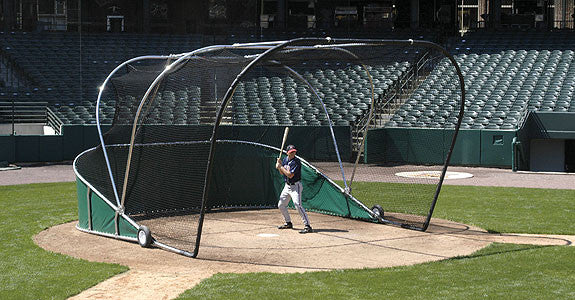As we get into the middle the summer many of us are umpiring tournaments in the final season games before we move into our high school seasons.
Had this unusual situation occur on the field just the other day and wanted to know how you think it should have been called by the umpire.
=====================================
a runner was rounding third base looking back inside to see where the ball was and he ran into the third baseman that had moved all the way to file territory almost in the coaches box. This runner ran into the third baseman did not have the ball fell down ( was asked the injured a little) but after he had fallen to the ground the third baseman receive the ball and take him out. The coach wanted obstruction and to even allow him to score-- the other coach said it was the runners responsibility to know the was going and ran into the third baseman on purpose hoping that there would be a bad throw. What would you rule go to the chatline and give me your answer.
=============================
The umpire ruled as I believe to be correct that it was not obstruction the runner was so far how the baseline running into a player that was clearly away from the bag that it became neither interference nor obstruction just to play that got the runner tagged out. It's unfortunate that he got slightly injured but the third baseman was not in the wrong place he was trying to avoid the runner so no obstruction and the runner did not create interference because there is no interference to involved as a result throw. So no obstruction and no interference we have just the play of the runner getting tagged out at third.
Umpire Arnald Swift
Let's revisit drop third strike. Once again I watched ballgames have umpire ballgames that this gets to be an issue. First a drop third strike is any third strike that's called or swung at that strikes the ground before goes into the catchers glove or falls out of the catchers glove and goes to the ground, not being held securely from the pitch or from the swing.
Now that we've defined that when can you run you can run on third strike meets the definition above any time for spaces open. But here's where the confusion comes if first space is occupied with less than two outs (0 or 1) then the batters out automatically even if he attempts to run deficient not play he cannot advance in the runners can only advance at their own risk. Now here's where the confusion comes in with two outs in the same exact play occurring the batter can run even with first base occupied. Now normally the catcher would just simply throw to the first baseman and the batter would be declared out but we need to keep in mind that all the force rules are still in play. The one that we see most of the time is bases-loaded missed/dropped third strike catchers picks it up and touches home plate which is legal and the runner coming from third base is the one that's declared out.
We got into this discussion just the other day when one of the parents said they couldn't run with the runner at first base because the play before with less than two outs the umpire declared the batter out then sure enough with two outs the batter struck out again with the catcher dropping the ball and they allowed him to run to first with no throw because coaches didn't know the rule and everybody was safe. In the course the coaches one complain that he was out a minute ago and now you changed your ruling and now I safe of course that's not true the difference is one time was with less than two outs. The other time was with two outs.
We need to add to this a little bit, if a catcher does not touch the batter and the batter leaves the batters box and no play is made the runner could be told to run and go directly from where he stands to first base. This is a very valid rule in high school, college, Pro now when you what's major-league ball on TV you see this occur you see the catcher facing the batter in the batter is walking away that's considered a play in the runner has given up and become out but the catcher must acknowledge the runner and the runner must either start to first base or if he gives up he declared out. There's no such thing as leaving a box and being automatically out or leaving the baseline and being automatically out.
Umpire Arnald Swift
drop 3rd strike and what to do and when to do it
I was coaching in a youth game in the day and this came up and while it's been talked about many times is still a problem that comes up so I thought I'd go over a couple of situations that you're going to see especially with the younger ballplayers, and if you happen to be in umpire hopefully you'll be able to handle it correctly.. It's confusing enough that there is a famous case in the World Series where it was called wrong.
Situation = two runners on the same base there are couple of things to consider but the first and foremost is who has the right to that base. The other player is the same as being off the base and can be tagged out on matter where he standing.
First situation = runner on first and second base ball hit to the shortstop who bobbles it but picks it up in time to get in front of the runner at second going to third that runner turned around and goes back to second. Who's out? The runner that was on second originally because of the bases behind him being occupied the ball was hit he had to run, he was forced, so therefore he had no right to second base and when he was touched regardless of priesthood he's out in the runner coming from first base was safe at second because he had the right to that base. Now a little twist on that that you see every once in a while the runner from first turns and starts back and is the first one gets touched, he's out but now the runner that was originally on second no longer has to run and therefore he's safe.. So defense the player really should tag the runner that is advancing to the next base then many times in the runner will panic and leave and you can get a double play.
second situation = runner at third and second nobody on first. The ball is hit to the third baseman and the runner on third does not run but the runner on second does run and comes over and touches third base. Now the third baseman goes to third base and touches both runners. Now the question is who is out-- the runner coming from second base, he didn't have to run therefore he had no right to third base so the original runner on third base is safe.
The defense the players need to be aware of in what order to tag a runner(s) when there are two on base at the same time..
Thoughts from umpire Arnald Swift
COPY CREDIT TO SITE STUMP THE UMP.
Dave from Clearwater, FL asks:
In game 5 of the Toronto and Texas 2015 ALDS, when Shin-Shoo Choo was in the box but his hand was left on the line of the box, Russel Martin went to throw back to his pitcher and the ball hit off of the batter's bat. How is this not interference since Choo's bat was on the line or almost in the field of play (close call) on Choo as Martin inadvertently hit Choo's bat on the throw back to the mound? Thus Rougned Odor scored from 3rd. Furthermore, umpires made a different call (which had the ball being dead and returning Odor to third) before reversing it to allow Odor to score. Why were they allowed to reverse it? Very confused as the rules in baseball are so complex compared to other sports. Thank you!
This play has caused a lot of confusion but this scenario is covered in the Major League Baseball Umpire's Manual. Ruling 29 of this book, which refers to MLB Rule 6.06(c), covers exactly how to handle throws back to the pitcher where the batter potentially interferes. This interpretation states that, as long as the batter does not intentionally interfere with the throw, then, if the batter is standing in the batter’s box and he or the bat is struck, then there is no infraction and the ball is still alive and in play. Even though Choo's bat was potentially out of the box at the moment when the ball hit it, since Choo himself was still in the box and he did not attempt to interfere with the ball, the ball should have remained live allowing the runner to have the chance to score.
The second part of your question is a part that I came across a lot tonight while reading comments on game recaps; why were the umpires allowed to reverse the call after already calling the play dead? It is always the first and main priority of the umpires to get the call right, even if that means reversing a call or making an unpopular decision. Being as this is a very unusual play and one that is not even covered in the general MLB rulebook but instead in their secondary Umpires Manual, it is hard to blame Dale Scott for freezing for a few seconds before calling this play dead. However, as the umpires are expected to do, they paused the game, got together to discuss the play, and then reversed it to ensure they got what very potentially could have been a game deciding call correct by deciding what would have happened if the play hadn't been stopped.
Answered by: Jonathan Bravo
Keywords: MLB Rule 6.06(c), MLB Umpire Manual, Choo, Odor, Martin, Toronto Blue Jays, Texas Rangers
Situation: Runner on first less than 2 outs. Hard grounder to the first baseman and he touches first throws to second. Can the runner choose to go back to first and try to make it back safely or must he go to second?
As soon as first base was tagged, the force is taken off the runner going to second. This means that there is no force at second base and he can return to first if he wants. This also means that the fielders will have to tag him out instead of just stepping on a base.
A ball is hit to the second baseman, he bobbles it, and the runner from first is running to second base and kicks the ball, what is the call?
There are two potential rulings on this play. The first one is that, assuming that the kicked ball was unintentional, the umpire will not call the runner out and play shall continue. However, if, in the umpire's mind, the kick was intentional, the ball is dead and the runner is out for interference.
There are several other scenarios also to consider, hits the runner before it get to the fielder. Ruling runner is out, ball is dead, and all runners return to the base they were on, batter is awarded 1st base.
Ball pass a fielder, other than the pitcher, how had a chance to field the ball and hits the runner. -- Ruling-- The ball hitting the runner is ignored and ball is live and played on as any batted ball would be.
I was watching major league baseball the other night in a situation occurred that I thought we discussed a little bit so that umpires wouldn't forget, and more important coaches could learn from it and use it to their advantage.
A foul ball is treated like any fly ball whether it's fair file with runners on base. Coaches tend to forget that they can tag up in advance on a catch from a foul ball. Every flyball whether fair or foul can be advanced on if the runner is tag up and touching the base when the player that's catching the ball touches the ball, side note here it does not have to catch only be touched, and then advances to the next base.
With that said runners and coaches shouldn't forget that when a foul balls caught a need to get back to their base, or the defense can touch the base first and the runner will be declared out on the appeal. I know nobody says anything in the everybody just does it and automatically the umpire calls out the runner if he's left the base to early is trying to return. But that really is an appeal play.
Remember you can advance on a foul ball that's caught or you can be put out a foul ball that caught just something to keep in mind.
Just saw this on TV this past weekend in a professional game, on the MLB channel. And thought it was worth a quick discussion to try and clarify again.
Situation was a runner at first base with one out. A line drive was hit to the second baseman who caught it for the second out. He then tried to throw to the first baseman to double off the runner but he hit the runner in the head which caused the baseball to bounce into the dugout. The umpires awarded the runner third-base, then you could see on TV the manager holding up two fingers and talking to his coach and saying is that right.
The answer is it was correct the rule states runners shall be awarded two bases from the base they last possessed at the time of the throw-- key issue here at the time of the throw not when it left the field--. This runner possessed first base, it makes no difference that he was going back to first, when the throw was made and then went out of play so he was awarded third. I would also interject here that if a pitcher throws the ball while touching the rubber, almost always during a pickoff attempt, then there is an exception it is only one base if a pitcher throws it out of play. However keep in mind if the pitcher steps back off the rubber he now becomes an infielder not a pitcher and you would award a runner two bases if the ball would go out of play.
I just thought it worth noting that even at the highest level of play coaches and players are not aware of the rules, I think one of the best things a coach can do is know the rules. You can argue all you want about balls and strikes, safe and out and you'll never get anything done but if you know the rules then you have a chance to make your point and get something accomplished positive to your ballclub.
Umpire Arnald Swift
Running Lane and Interference
The batter is out if, in running to first base, the batter-runner is hit by a throw while running outside of the 3 foot running lane, or interferes with the fielder taking the throw at first base. He could be called out even if he is not hit by the throw, if the umpire judges that by being outside the lane he interfered with the fielder’s attempt to field the throw. There must be a throw before interference can be called and the throw must be a quality throw. Rule 6.05(k).
A runner is not free from interference while in the lane, nor automatically guilty when out of the lane. If he is out of the lane he is in serious jeopardy of being called for interference, but it is not automatic, unless he is hit by the throw, or commits an intentional act of interference. The rule states that he is out when out of the lane AND causes interference with the fielder taking the throw. If he is out of the lane and is hit by the throw, that is always interference. If he is in the lane he could still cause interference, but it would have to be something obviously intentional (like grabbing the fielder's arm or glove, or deliberately touching a thrown ball). If the catcher does not make a throw because the runner is outside the lane, this is not interference. Interference with a thrown ball must be intentional. Such as, deliberately making contact with it. Or in this case if the runner is hit by the throw while outside the lane. The lines marking the lane are part of that "lane," but the runner must have both feet within the lane or on the lines marking the lane, to be judged as "in" the lane. Rule 7.09(k) casebook, N.A.P.B.L 4.14.
If the runner is hit by the throw or a collision occurs on his last step before touching the base; generally interference is not called. The runner has to step into fair territory to touch the base that is in fair territory.










